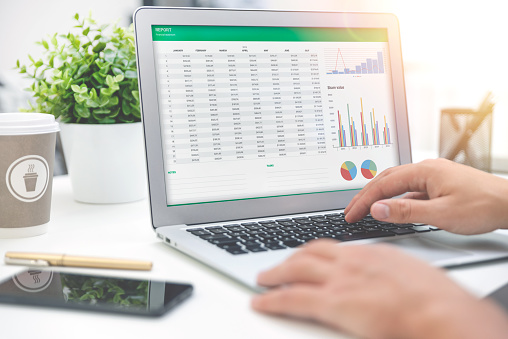
How Important Is Excel in Business?
Spreadsheets are one of the most widely used tools in business. But with more businesses stressing the need to learn programming languages such as Python to land data analytics roles, a common question being asked is, “How important is it to learn Excel?”.
We’ll answer this question and more.
Is Excel still used in business?
Yes, Excel is still widely used in business. For many business analysts and managers, the ability to use spreadsheet technologies such as Excel or Google Sheets is considered common knowledge.
What are business alternatives to Excel?
There are many alternatives to spreadsheet technologies, namely:
- SQL: SQL is a query language that enables the use of large databases. Databases are often more reliable than Excel and can store much more data than Excel—which can only handle up to one million data fields.
- R: R is a popular programming language for data scientists and statisticians. Although originally an academic language, data analysts use it for quick data visualizations and statistical answers.
- Python: Python is a flexible programming language that is widely supported and used for data analysis, data visualization, and task automation.
SQL, R, and Python can be considered more powerful alternatives to Excel that enable higher volume data storage, more advanced features for data analytics and data visualization.
Why do companies still use Excel?
Although powerful tools exist such as SQL and Python, nothing tops spreadsheets when it comes to quick and accessible data analysis. Of all the existing data analytics tools, spreadsheets remain the most accessible and traditional tool for business analytics; many businesses have used spreadsheets since the start to store and analyze data, and Excel is the easiest to pick up and use for most users.
How many businesses use Excel?
In 2019, market research indicated that roughly 54% of businesses use Excel—and this doesn’t include other spreadsheet applications. Worldwide, more than 2 billion people use spreadsheet technologies such as Excel and Google Sheets. Companies hire candidates with Excel skills because the use of spreadsheets is considered standard for daily business analytics.
What makes Excel a valuable business tool?
Spreadsheets make it easy to manage data and visualize information. Of the available options for data analytics, Excel offers arguably the best balance of power and accessibility; spreadsheets provide powerful functionality such as graphs, pivot tables, and formulas, but are more accessible than advanced tools such as SQL.
Excel in particular is also compatible with many other popular data analytics tools, such as Google Sheets, and can interface with more advanced data analytics options such as Python’s pandas package—as both are compatible with the popular “csv” data storage format.
Ultimately, Excel is the most easy-to-learn and widely-used data analytics tool for businesses, and that’s likely not going to change.
How do businesses use Excel?
Businesses use Excel to store, visualize, and analyze data. Some example business use-cases include:
- Inventory tracking and management
- Client management
- Financial accounting
- Consumer data collection
- Budgeting
- Invoicing
- Project management
- Content calendars
Excel is also widely supported by other data pipelines and automation tools. For instance, businesses can pair Excel with Zapier to automate data-gathering; a client can complete a form with their contact information, and Zapier automatically populates a row in the relevant Excel sheet with their information.
Why might Excel be bad for business?
Although Excel is popular and accessible, it’s not always the optimal tool for businesses.
Human errors
In the 1990s, a tax accountant in Fidelity Investments made a costly mistake. The accountant accidentally left out a minus sign. This incident resulted in a $2.6 billion error. Although this incident didn't affect shareholders, it demonstrated reliance on technology and the importance of double-checking work.
Large databases
The larger a database, the slower Excel becomes. At some point, a business’s databases may become too big and complex for Excel to handle; at that point, analysts must transition to database-specific tools such as SQL and Python.
Data security
Database technologies such as SQL are designed to reduce the chances of errors when storing, migrating, or exporting data. Excel does not come with very robust tools and features to ensure reliable data. For smaller collections of data, Excel works just fine, but the tool becomes riskier and less reliable with larger databases.
Advanced features
If a business needs to use advanced statistical methods such as machine learning or predictive analytics, it’s best to use more powerful tools offered by programming languages such as Python. Although Excel provides some features for statistical analysis, such as linear regression, it is not the best tool to use for more complicated data science tasks.
Why is Excel so popular in business?
Excel is the Swiss army knife for business data analytics. It is a powerful yet accessible jack of all trades solution for business needs such as quick data storage and manipulation, collaboration with data, automating tasks, and more.
Although a business may want to use more advanced tools as they scale, most businesses can save time, get the answers they need, and ensure smooth operations on the day-to-day by using spreadsheet technologies.
Where can I learn Excel online?
edX offers free online data analytics courses and Excel courses. Whether you’re looking to change your career or wanting to improve your data analytics skills, you can use the edX platform to learn data skills from top institutions such as MIT and Georgia Tech.
Get started today!
